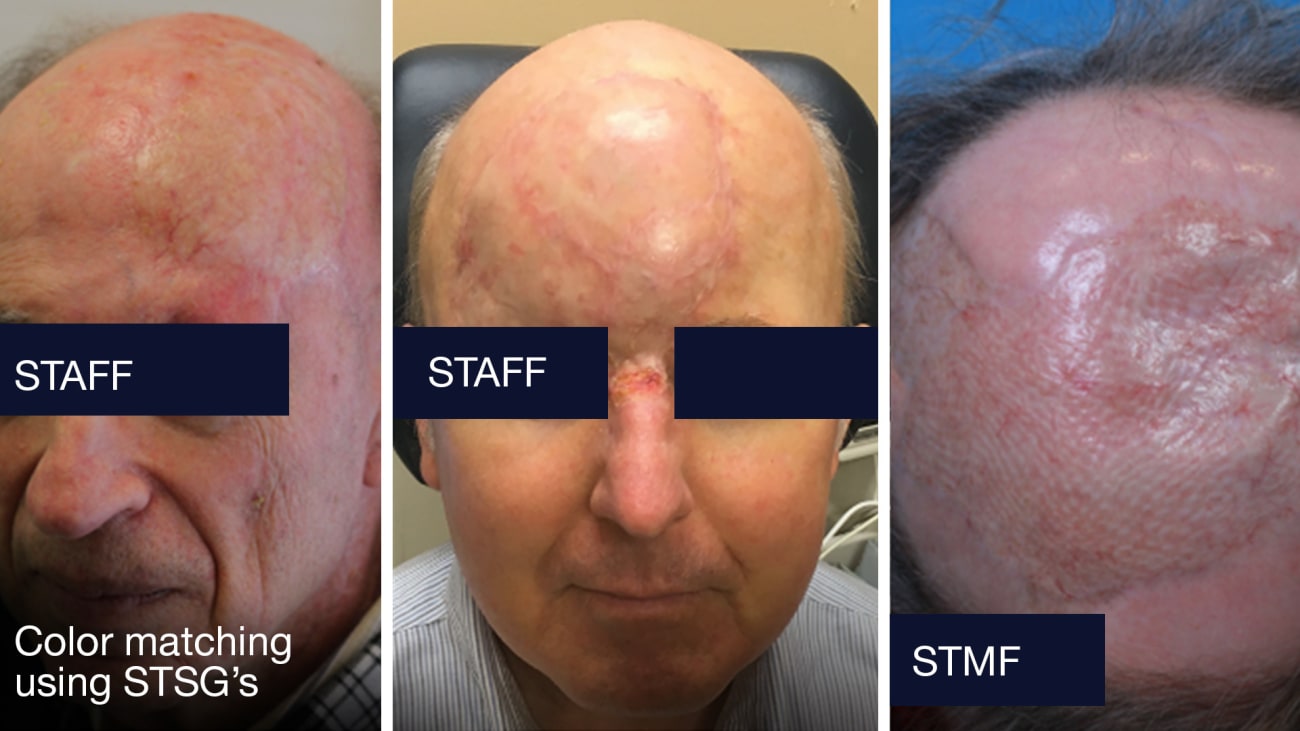
A new procedure developed by UCSF facial plastic surgeons provides patients undergoing microvascular facial reconstruction with a more accurate skin color match than was previously possible. Described in a recently published study, the technique involves placing split-thickness skin grafts (STSGs) atop de-epithelialized free tissue, which allows a more natural facial skin color to appear through the grafts. A handheld colorimeter is used to measure the color match.
Until now, the use of skin from other parts of the body for facial skin reconstruction has typically resulted in severe color mismatching. This contrast is most extreme in older, fair-skinned adults whose faces are more deeply pigmented from cumulative sun exposure.
STSG results in “privacy glass” effect
“With this new technique, the skin grafts act like an opaque layer, like privacy glass. This allows the color of the underlying tissue to show through, which is more likely to match the color of the face,” said the study’s lead author, P. Daniel Knott, MD, FACS, director of facial cosmetic and reconstructive surgery within Otolaryngology–Head and Neck Surgery at UCSF. “The skin color associated with using fibrofatty tissue seems to offer increased pink and yellow tones, and the muscle tissue offers a darker brown color.
“Using this grafting method, we’re able to modulate facial skin color to improve patient aesthetic outcomes,” he added. “This has never been done before.”
Measuring color accuracy
In the study, 68 adults who underwent head and neck reconstructive surgery were divided into six categories based on these cutaneous reconstructive techniques:
- Cervicofacial flap
- Radial forearm free flap
- Fibula free flap
- Anterolateral thigh free flap
- STSG over adipofascial flap
- STSG over myogenous flap
The UCSF team took averaged color samplings from digital photographs of the reconstructed defect and adjacent normal skin and measured the color difference using the delta-E calculation, a measurement that ranks color accuracy.
The team found that STSG over de-epithelialized myogenous and adipofascial free tissue transfers produced a better color match than the skin paddles of donor sites, with the exception of the radial forearm donor site. Delta-E values obtained from photos correlated well with color-match ratings by Mohs dermatologists blinded to the study population.
Since the study, Knott and the UCSF team have begun using a handheld colorimeter to confirm skin color match with even more accuracy. “Just like trying to match the color of scrapes to your car, paint splotches on your home interior or the color of dental implants, the process of accurate color matching starts with accurate color measurement,” Knott said. Using the handheld colorimeter, Knott and his colleagues are directly measuring the color match of the reconstructions and the tissue color from all potential donor sites. Additional research on the modifiability of the actual determinants of skin color are ongoing.
Ideal color match: a new paradigm for facial reconstruction
“The goal is to develop a paradigm that would offer the best color match from very pale to very dark,” Knott said. “Different depths of skin grafts, encompassing varied amounts of melanocytes using different tissue sites and donor sites, would enable us to modulate the eventual color to realize ideal color match.”
Knott noted that a sample of UCSF patients surveyed in the months after surgery indicated that appearance was as important to them as functionality. “Disfigurement is associated with decrements of mental health and psychosocial functioning, which underlies the importance of high-fidelity, sophisticated and ambitious paradigms for facial reconstruction.”
To learn more
UCSF Facial Plastic and Reconstructive Surgery Clinic
Phone: (415) 353-9500 | Fax: (415) 885-7785




